Learn how to grow a year’s supply of a few vegetables products without hardly any land at all. In this post, you will discover some of the easiest things to grow and produce yourself. Even on a tiny bit of land, you can begin to produce your own food and start your journey towards food independence.
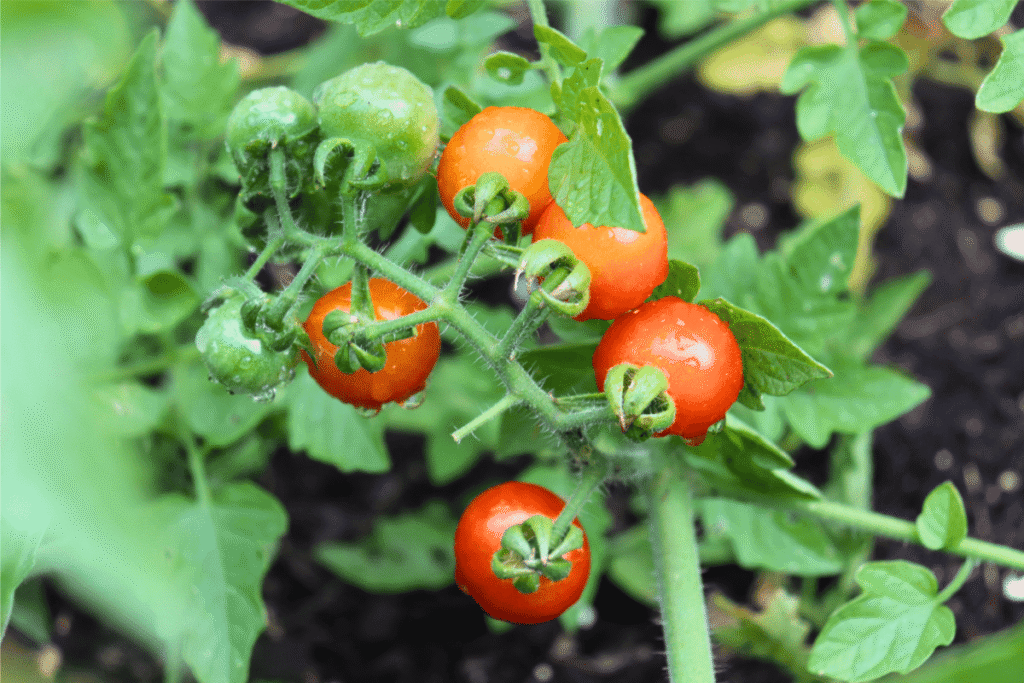
I would love to grow all of our fruits and vegetables, but living on a fifth of an acre in the heart of a major metroplex, it’s not realistic. Still, my husband and I continue to grow our urban homestead to produce more and more of our own food each year. In this post, we will share some of the easiest products we have found to grow and source a year’s supply of without hardly any land to work with.
To be successful, we focused on two things: what grew well in our zone (8b) and what we could reasonably grow a full year’s supply of without much space. What we came up with and were successful in were products that we don’t need tons of, and could preserve for the full year.
1. Sun-dried Tomatoes
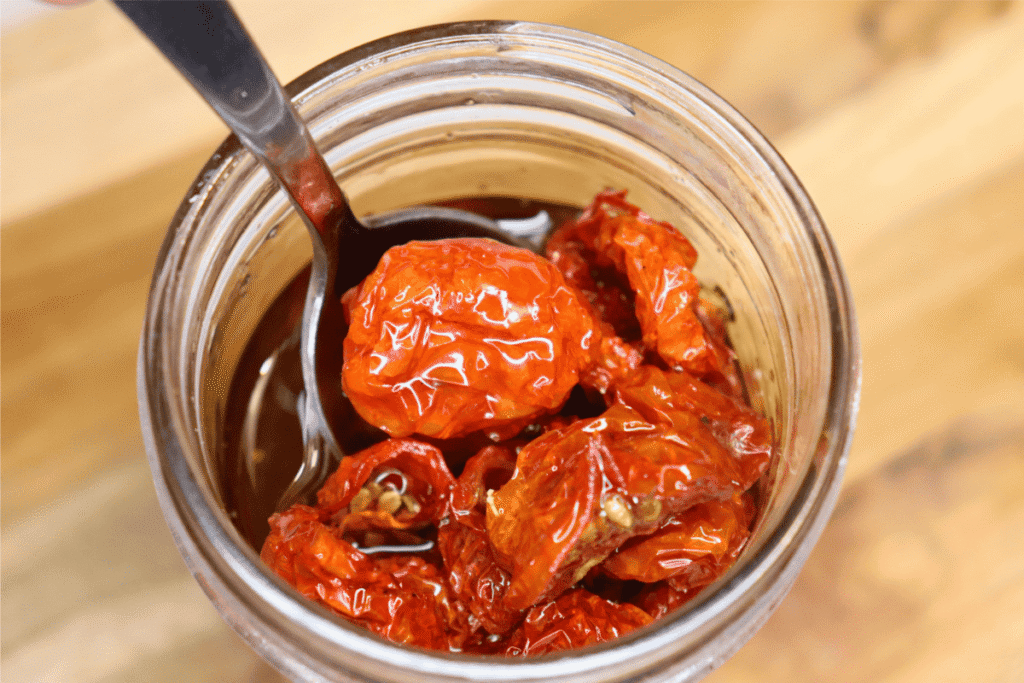
Next to herbs, tomatoes are one of the most popular starting plants in vegetable gardens, especially in Texas. We chose sun-dried tomatoes because it is a product we love, but only need a small amount of per year. It was a great product to start with and encouraged us that we could produce something for ourselves for a whole year. Here are some things to know about growing a year’s supply of sun-dried tomatoes:
Pros
- Tomatoes are relatively easy to grow and can be grown in pots.
- There are multiple varieties and types to choose from (cherry, grape, San Marzano, Roma).
- Most people only go through a few jars a year.
- Though helpful, you don’t need any fancy equipment to preserve them.
Cons
- Tomatoes are more difficult to grow in northern climates.
How to Grow a Year’s Supply of Sun-dried Tomatoes
My husband and I started by growing two cherry tomato plants in our raised garden bed. Each year, we consistently get a little over a pound of cherry tomatoes from each plant. Of course, your harvest will vary depending on your climate, soil health, etc. Had we used all of the cherry tomatoes this season for sun-dried tomatoes, we would have made about 3 half pint jars of sun-dried tomatoes. In reality, we made one because we thought of this too late. There’s always next year.
Most people don’t eat a ton of sun-dried tomatoes, making it the perfect product to grow a year’s supply in limited space. Depending on how much your plants produce, you can assume to get 3 half-pint jars worth of sun-dried tomatoes for every two cherry tomato plants. If you use grape or Roma tomato plants, you will need to adjust how many plants you grow according to how many tomatoes you get on average. You can follow the chart below for growing a year’s supply of sun-dried tomatoes for your family.
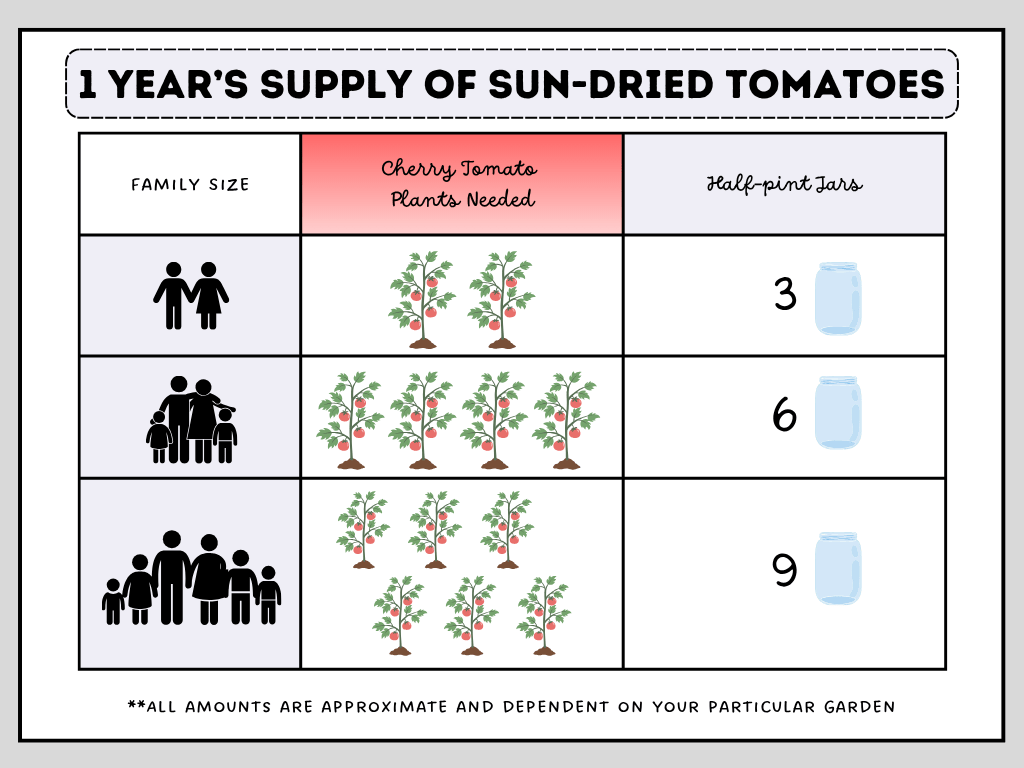
Remember, every plant is very different. These measurements are based on our small organic garden in our North Texas climate, but your garden may produce very different results. What is considered “easy to grow vegetables” here can be very different than those in Minnesota, for example. It is always best to underestimate how much harvest you will get if you are uncertain about how something will grow in your own climate.
2. Pickles
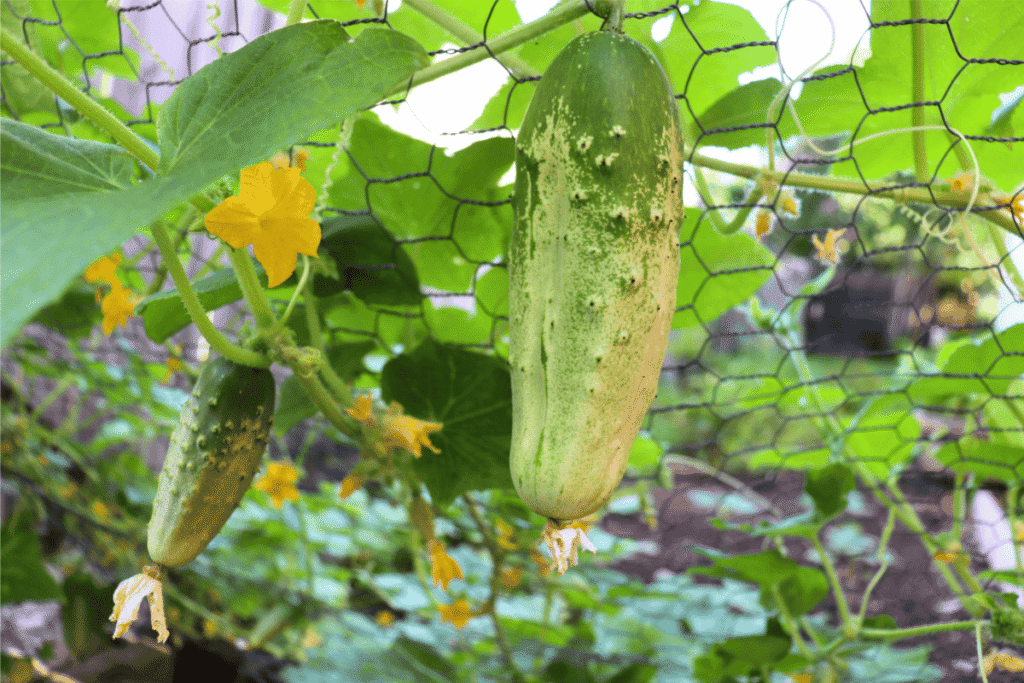
We have been producing more than a year’s supply of pickles for a couple of years now. Let me tell you, pickles are the easiest thing to source yourself and taste so much better than store-bought.
Pros
- Cucumbers are extremely easy to grow.
- They are easy to preserve without any special equipment.
Cons
- Cucumber plants cannot produce a lot from pots. They need to be in the ground.
- They can take up a decent amount of your garden depending on how many you grow. If you want to learn how to make a cucumber trellis to save garden bed space, check out our tutorial here.
How to Grow a Year’s Supply of Pickles
Pickling cucumbers are heavy producers and heavy feeders, so you want to make sure you have rich soil to support them. You will also want to pick a sunny spot for them in your garden. Cucumbers need 6-8 hours of sunlight per day.
Though cucumbers are some easy to grow vegetables, they can attract a lot of pests and diseases. To prevent fungal disease, never water them overhead and trellis them to improve airflow. Keep an eye out for cucumber beetles, aphids, white flies, and other pests.
Pickles are a favorite Spring, Summer, and sometimes year-round treat, so let’s plan for a lot more pickles than we did sun-dried tomatoes. Follow the chart below for growing a year’s supply of pickles for your family.
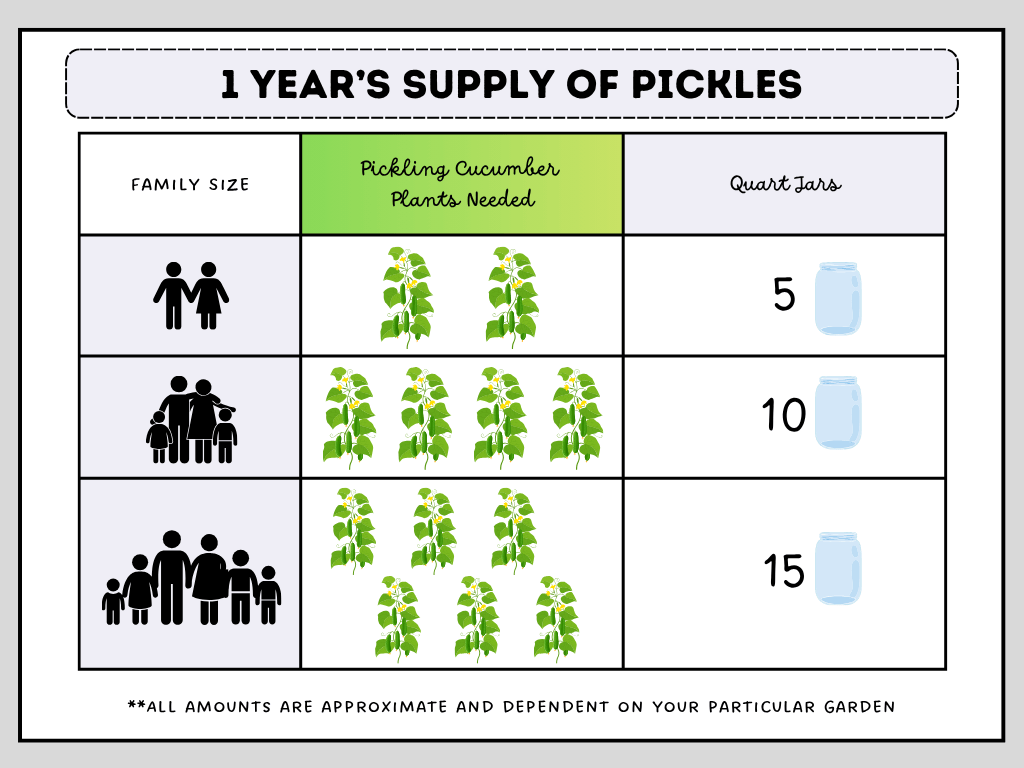
3. Thai Chilli Flakes
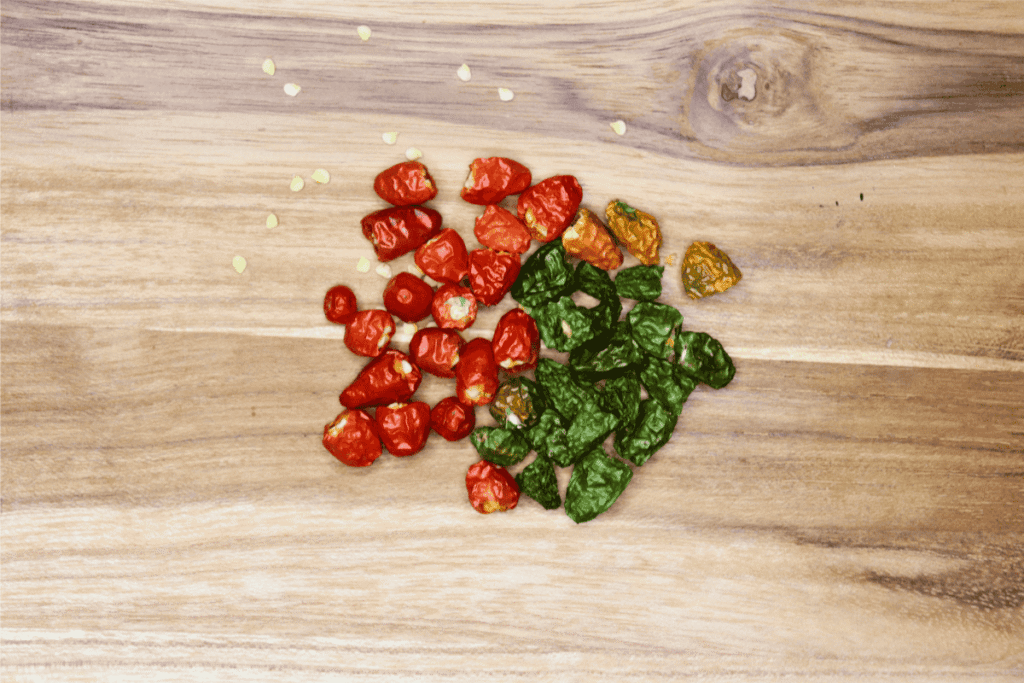
This year, we grew one bush of Thai Chilis (also known as Bird’s Eye Chilis) and it produced so many peppers, we couldn’t use them fast enough. This led to us dehydrating the leftover peppers and blending them into a (very) spicy jar of Thai chili flakes for pizza or as a spice for homemade meals. The Thai chilis are so spicy that you need very little to last the full year.
Pros
- Thai chili plants can easily be grown in pots.
- You need very few plants to grow a year’s supply.
- The flakes go a long way and add a wonderful spicy kick to meals.
Cons
- Not the best choice of chili flakes for those adverse to spice. These guys are very hot.
- Chili plants do not do well in northern climates, but you can try to grow them in a pot indoors. Just be sure they get lots of sun.
How to Grow a Year’s Supply of Thai Chili Flakes
This is a pretty hot pepper for the standard American palette. How much you need to grow will depend on your love of spice. We eat spicy food every other day, so we would want a bit more than I will recommend below. But I will base the chart on a more regular diet. Increase it if you are also a lover of spicy food. Follow the chart below for growing a year’s supply of dried Thai Chili flakes for your family.

Remember that all of these charts are very dependent on your climate, soil, and all the other factors that make gardening a continuous (but beautiful) learning process. Feel like you’re not getting enough produce? Add on another plant! Up to your ears in a bountiful harvest? Share some with others! Homesteading is all about people helping out their families and communities, leading healthy, sustainable lives together.
More Gardening Tutorials From Awaiting Acreage
- Organic Pest Control Methods in the Garden
- Sturdy DIY Cucumber Trellis
- Small Space Vegetable Garden: How to Choose What to Grow
- How to Make Compost at Home
If you liked this tutorial for easy to grow vegetables, please consider giving it a 5-star rating below! This will help others find it and supports our family business.

Leave a Reply